Events
General Assembly of the Members of the Lithuanian Academy of Sciences: Science for Defence
29 09 2025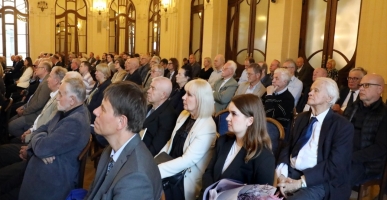
One of the central items on the agenda of the general assembly of the members of the Lithuanian Academy of Sciences held on 23 September 2025 was the nomination of the candidates for the upcoming election of the Academy’s president.
Yet let us start from the beginning, when Prof. Jūras Banys, the president of the Lithuanian Academy of Sciences, presented certificates to the winners of the Young Scientist Scholarship Competition, which is organised by the Academy. Based on the recommendations of the expert commissions of the scientific divisions of the Lithuanian Academy of Sciences for the awarding of scholarships to young scientists, the presidium decided to award the 2025–2026 scholarships to nine young scientists representing various branches of research from Vilnius University, the Lithuanian Research Centre for Agriculture and Forestry, the Lithuanian Energy Institute, Vilnius Gediminas Technical University, the Centre for Physical Sciences and Technology, and the Lithuanian University of Health Sciences.
The assembly approved amendments to the regulations of the Young Academy of the Lithuanian Academy of Sciences, which define more clearly the relationship between the Young Academy and its alumni.
This was followed by a formal ceremony of the inauguration of two foreign members of the Lithuanian Academy of Sciences – Prof. Daniel Petit (France) and Prof. Bernhard Peters (Luxembourg). They were awarded diplomas and badges of membership of the Lithuanian Academy of Sciences. The new foreign members of the Lithuanian Academy of Sciences gave their inaugural speeches. The French linguist Daniel Petit spoke, in Lithuanian, about the Indo-European heritage in the Lithuanian language. He emphasised the importance of the Lithuanian language for Indo-European grammar. Lithuanian contains a myriad of archaisms and therefore some forms of the Lithuanian language coincide with Sanskrit forms. The analysis of the forms of Lithuanian is particularly important for etymological research. In this way, the Indo-European heritage unfolds in the Lithuanian language.
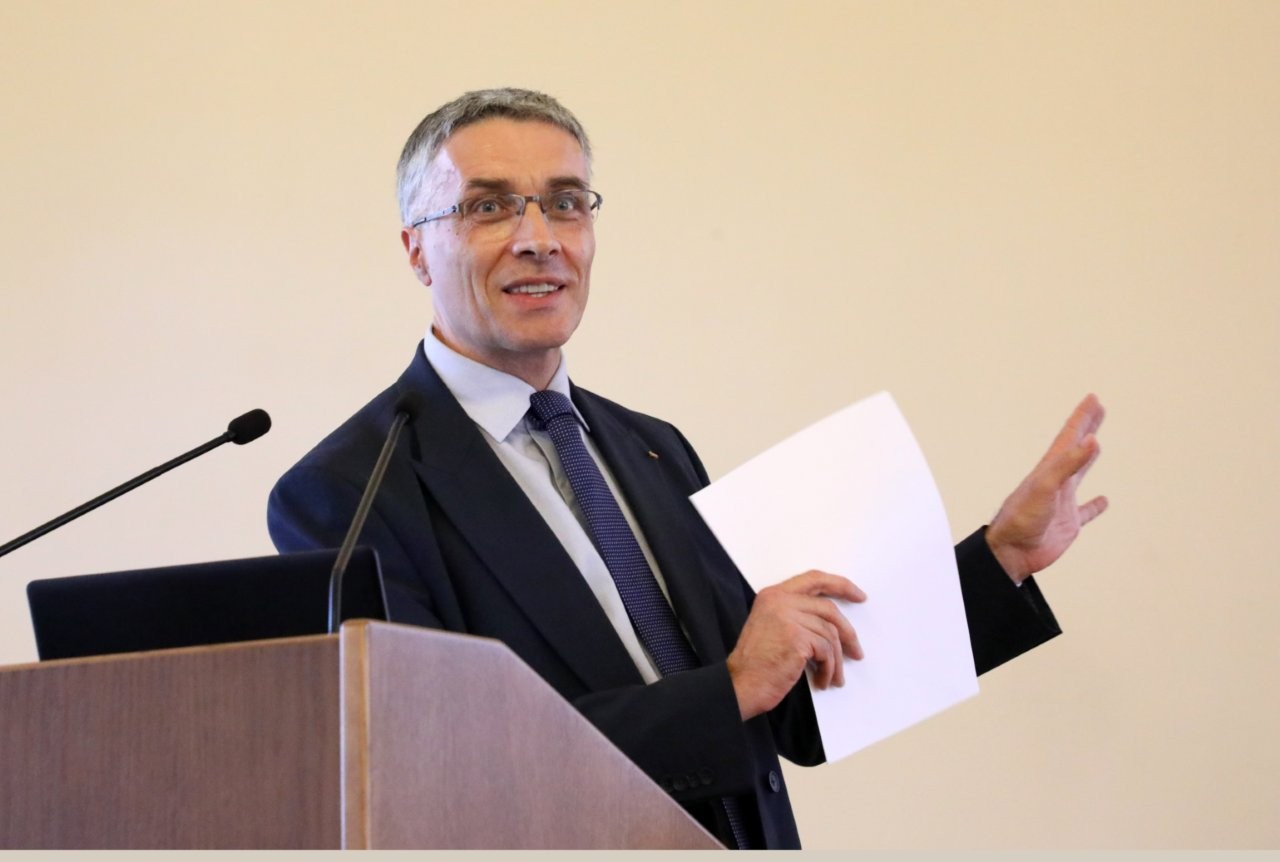
Foreign member Prof. Daniel Petit
In his inaugural address ‘Solution of momentum transfer in Oiler and Lagrange formalism using the inserted boundary method’, Prof. Bernhard Peters from the University of Luxembourg introduced his research to the audience. He develops various models for studying the dynamics of liquids and solid particles. The results of research show that computer simulations often do not correspond to reality. Prof. Peters’s research contributes to the improvement of efficient processes in the fields of renewable energy and thermal engineering.
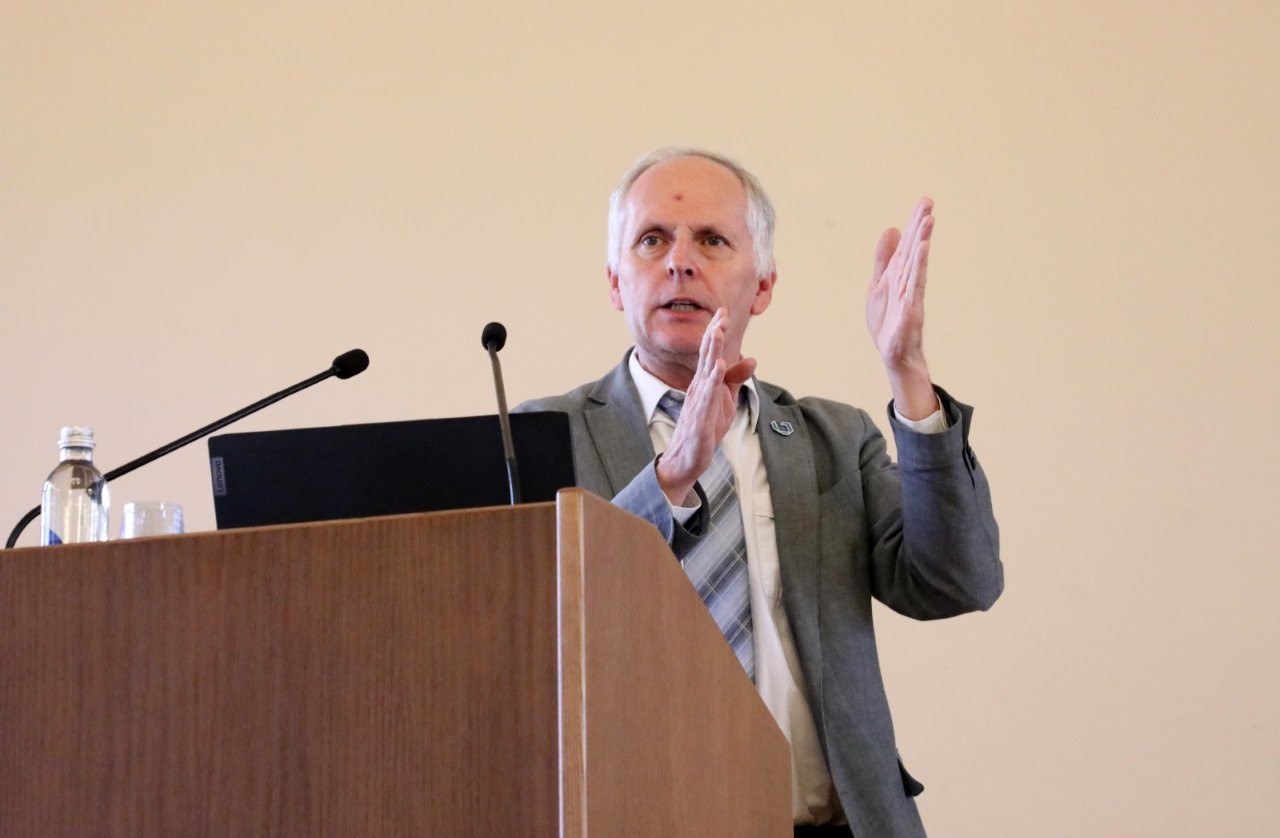
Foreign member Prof. Bernhard Peters
The inaugural addresses of the new foreign members were followed by the highlight of the general assembly – the nomination of the candidates for the presidency of the Lithuanian Academy of Sciences. Prof. Jūras Banys, the president of the Academy, invited academicians to propose candidates for the presidency of the Lithuanian Academy of Sciences. According to the regulations, ‘candidates for the president of the Academy of Sciences are nominated by full members and members emeriti of the Academy of Sciences at the general assembly of the members of the Academy of Sciences (nominations discussed and agreed upon in advance help to choose the best voting option and are therefore most desirable). A person who is not present at the assembly may be nominated as a candidate with their consent.’
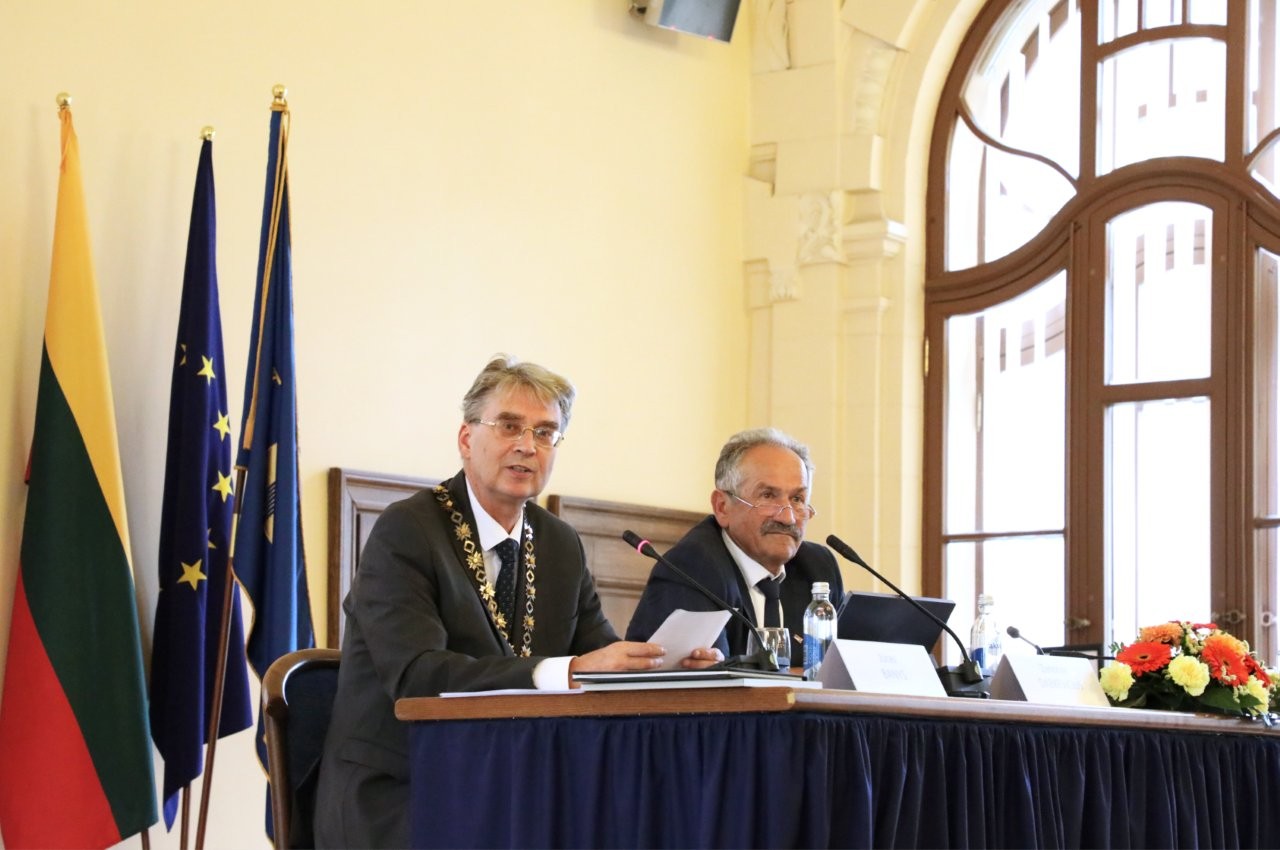
Nomination of the candidates for the presidency of the Lithuanian Academy of Sciences is announced
The academicians introduced the candidates proposed and supported by the scientific divisions of the Lithuanian Academy of Sciences: Gintautas Dzemyda (introduced by Vytautas Ostaševičius), Vytautas Nekrošius (introduced by Aušra Maslauskaitė), and Artūras Žukauskas (introduced by Valdemaras Razumas). With the approval of the participants by the assembly, a resolution of the general assembly of the members of the Lithuanian Academy of Sciences on the eligibility of candidates for registration was adopted. It was noted that the candidates are required to give their written consent to accept the position if elected and to submit a concise programme of planned activities and brief information on their scientific and organisational work. It was also decided that the election of the president of the Lithuanian Academy of Sciences would take place on 28 October 2025.
The thematic part of the meeting, ‘Science for Defence’, included three presentations on the contribution of scientists to the strengthening of defence. Dr Olga Navickienė, the director of the Research Projects and Analysis Centre at the General Jonas Žemaitis Military Academy of Lithuania, spoke about science and innovation in defence. First, she presented the new structure of the Lithuanian Military Academy. Currently, the military academy employs over 50 scientists. They conduct commissioned research and take part in R&D projects. Research groups of the Lithuanian Military Academy implement the research programme ‘Security and Defence of Small Countries’, thereby contributing to the development of the defence sector. For example, the POLARIS laser communication terminal between ships was developed and tested in collaboration with specialists of the Centre for Physical Sciences and Technology and Astrolight UAB. The system uses invisible laser light, and communication channels can reach speeds of up to 1 Gb/s. Such a connection is more difficult to detect and suppress.
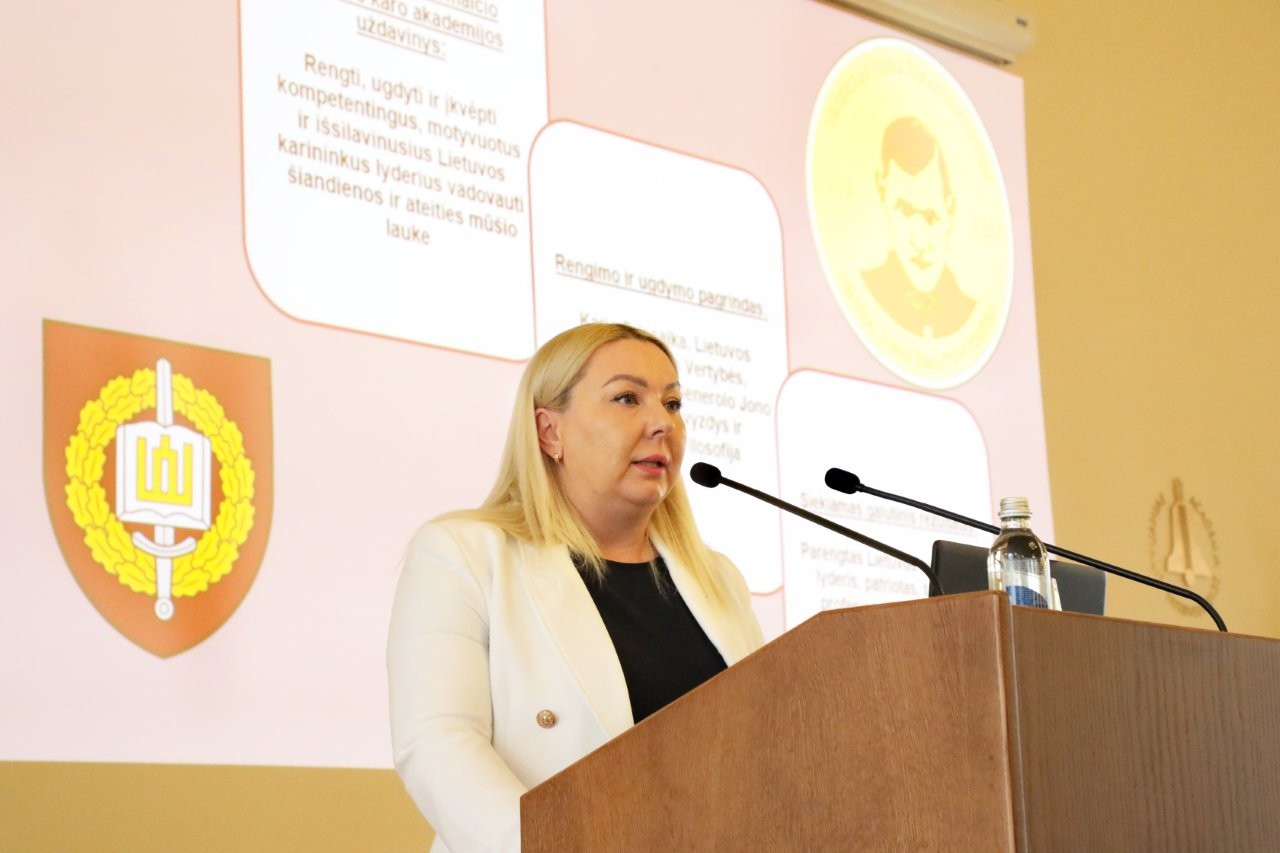
Dr Olga Navickienė
Professor and academician Vytautas Ostaševičius of Kaunas University of Technology spoke on the ‘Prospects for the Lithuanian Defence Industry’. The academician represented Lithuania in NATO's Science for Peace and Security Programme and NATO-Russia Council committees. Lithuanian scientists have considerable experience in this field. Currently, the university is developing communication station systems that help improve communication in war-torn Ukraine and mechatronic prostheses. Bringing together 100 companies, Lithuania has launched the ‘Vytis’ initiative to promote the defence industry. A defence industry system is taking shape in the country. The production of military drones is accelerating, even though it takes up to three years to develop a drone from concept to product. Lithuania is currently purchasing drone detection and neutralisation systems from Poland. Production of weapons for Ukraine will start in Lithuania, with €20 million allocated for this. The Vilnius Tech and Kaunas University of Technology autonomous systems competence centre has been established. A factory founded in cooperation with the German company Rheinmetall is already operating in Baisogala. Northrop Grumman is also investing in ammunition production in Lithuania. Anti-personnel mines will also be manufactured.
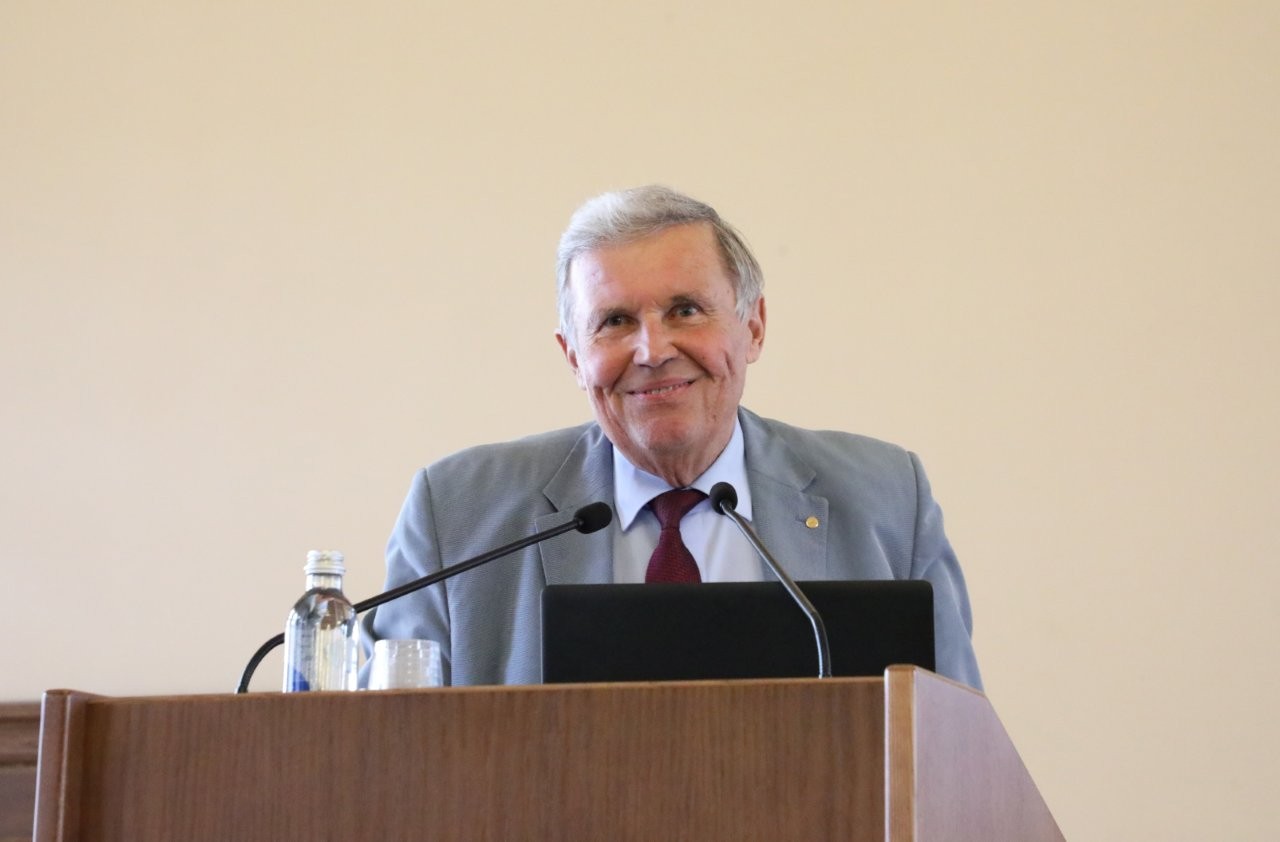
Prof. Vytautas Ostaševičius
In the third presentation, the academician Limas Kupčinskas spoke about medical science and innovations for extreme situations. He emphasised that staff preparedness for emergency situations is extremely important. This became obvious during the pandemic. Medical professionals had to develop innovations promptly. Using telemedicine technology and the Peer-to-Peer Simulation System, the specialists of the Lithuanian University of Health Sciences have created a network of regional remote training centres. This has enabled the training of over 2000 medical professionals and 500 students. Remote assistance centre has been established at Kauno klinikos. Later, after the Russian Federation invaded Ukraine, distance learning centres were opened at five Ukrainian universities. Over 15,000 Ukrainian paramedics and military personnel have been trained to provide medical assistance.
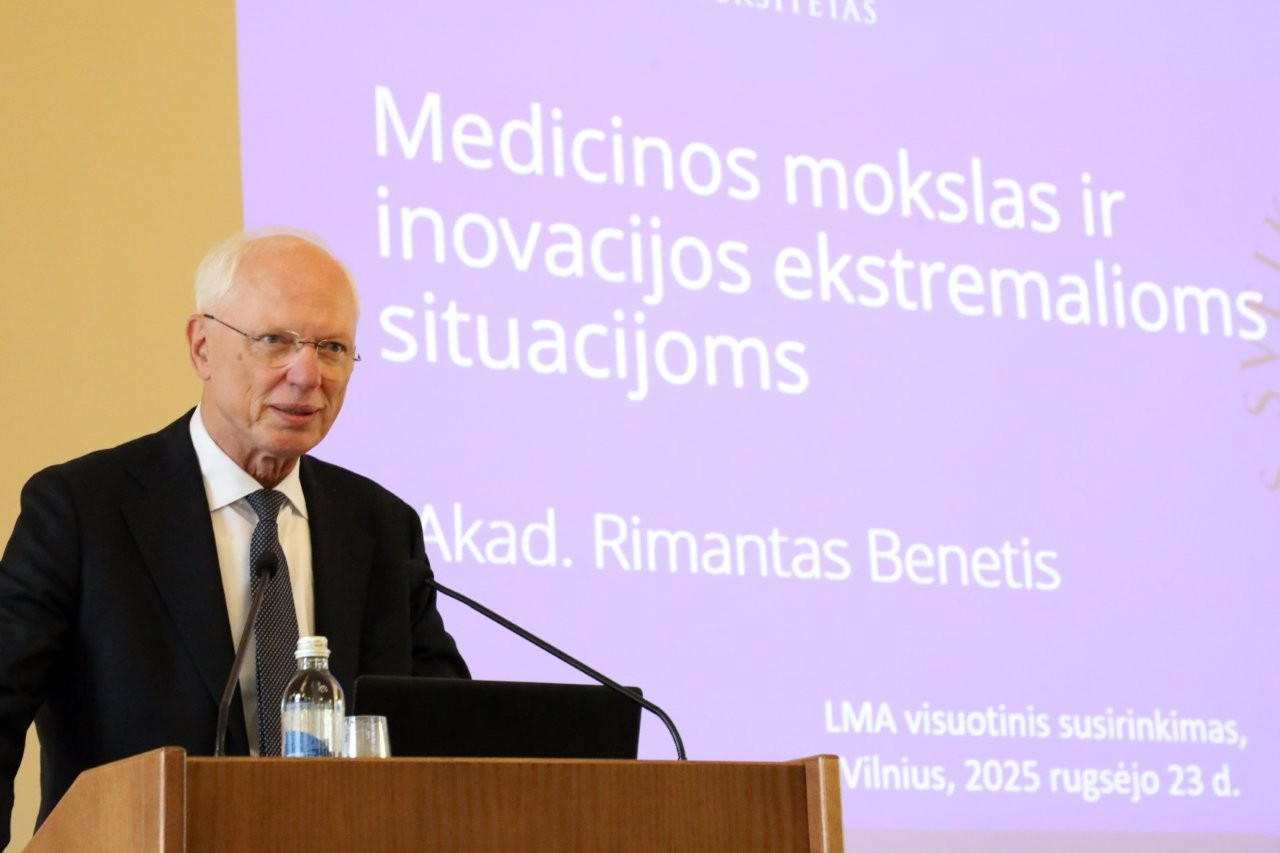
Prof. Limas Kupčinskas
Prof. Kupčinskas informed the assembly that it had been calculated that in the event of war, an average of 66 wounded soldiers would need to be treated in our country on a daily basis. It should also be borne in mind that the nature of injuries is changing in this war. Currently, drones mainly cause injuries to the upper body, head, and neck. The issue of medical staff safety should be addressed without delay. Over 2300 attacks on medical facilities have been recorded in Ukraine. About 200 of medical staff have been killed. There are no military hospitals in Lithuania yet, while Switzerland has seven underground hospitals. Lithuania definitely needs at least one. Part of the problem can be solved by the fact that Kauno klinikos has four kilometres of underground tunnels, some of which are of two storeys. Currently, the Lithuanian University of Health Sciences is implementing a number of other projects. For instance, an information system for managing extreme situations is being developed. It has been successfully tested in the centre of Kaunas on 450 simulated patients.
Another innovation is the AED alert (automated external defibrillator) programme. When a person in the city suffers sudden cardiac arrest, volunteers able to help are automatically notified within a 400-metre radius. In addition, emergency medical data in Kaunas is analysed in real time using artificial intelligence (AI). Therefore, a person undergoing a heart attack has a better chance of survival in Kaunas than in London. A network of volunteer donors ‘Walking Blood Banks’ is also being established. In conclusion, Prof. Kupčinskas emphasised the need to create trauma registers using artificial intelligence (AI) for data analysis and to develop simulation-based staff training. We must not forget about research into traumatic stress syndrome and psychological support for victims.
Dr Rolandas Maskoliūnas, Chief Specialist for Public Relations
Translated by Diana Barnard
Photography Virginija Valuckienė
